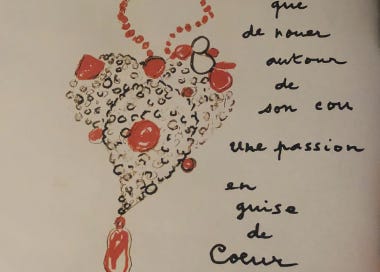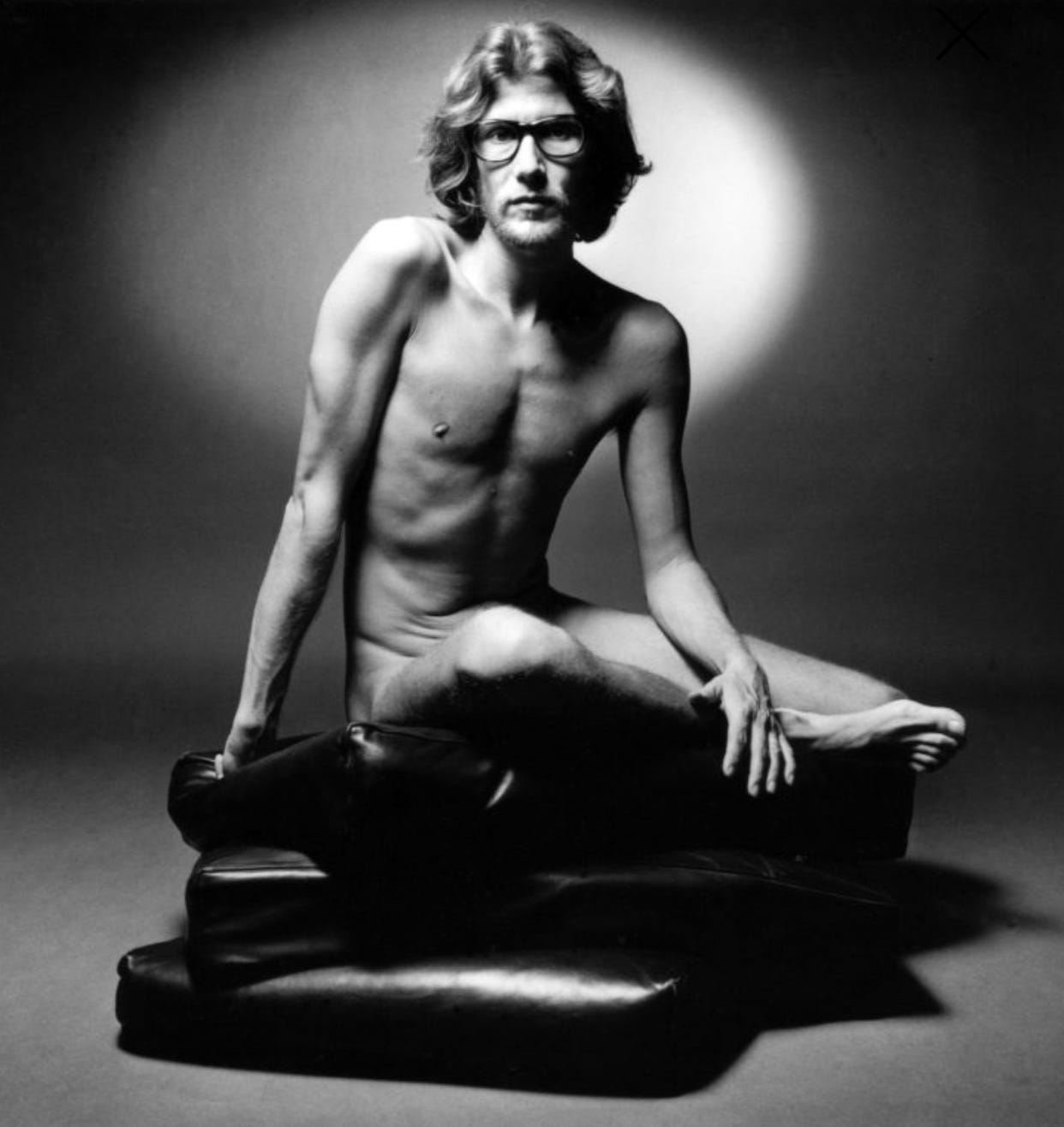Fabulous Fridays: The Legend of Yves Saint Laurent
The designer I am going to talk about in this article has a lot to do with the way we dress today, so I’ve had to take a bit more time to think about his influence on fashion in more depth.
Note: Out of respect for my readers in the U.S., I did not publish or post anything on Wednesday, as would be one of the usual publication days for The Stylish Collection, due to the Election results. I thought you all needed time to process it and maybe use this platform to express your views. So, I took a break for a couple of days.
I was also wondering, due to his fame and notoriety, what hasn’t been written or said about Yves Saint Laurent before? It was a challenge, which I have gladly accepted.
Yves Saint Laurent was born in 1936 to a middle class family in Oran, Algeria in North Africa. As a teenager, he loved theatre. During 1953-54, long before Barbie (or Bild Lilli for that matter) came into existence and, with the help of some paper dolls that Yves Saint Laurent cut out from his mother’s magazines in the form of models, he created his dream couture house, which he called Yves Mathieu Saint Laurent Haute Couture Place Vendôme. The magazines he would use for cut outs included Vogue, Jardin des Modes and Paris Match. Using ink, gouache and watercolour, he went on to design entire paper wardrobes for them. He would also cut up his mother’s dresses in secret in order to clothe his theatre characters, having built a wooden theatre diorama to make sets for plays performed in Paris at the time. The theatre set was a 1.5-metre cube and he had mechanisms that would enhance his performances. He would entertain and impress his sisters and cousins with his mini theatre, complete with lighting and positioning.
Yves Saint Laurent dressing the paper dolls he cut out from models in magazines.
Yves Saint Laurent and his paper dolls with the fashions he created for them.
Example of one of Yves Saint Laurent paper dolls from magazine models, dressed in one of his creations.
At the tender age of 18, he won joint first prize with Karl Lagerfeld at an International Wool Secretariat competition in the dress category - Karl won in coats. This was the second time he entered while studying for a few months at the École de la Chambre Syndicale de la haute couture. Consequently, within a few weeks, he was hired by Dior as his assistant.
Both men were into the fine arts and great readers, verging on the side of intellectuals. However, when it came to designing clothes for women, they did not think alike. Dior wanted to save women from nature, with his exquisite haute couture skills and knowledge of the past while Saint Laurent respected women’s nature and wanted women to be at the heart of the “turbulent, anarchic life of the 1960s”.
Three months after Dior’s passing, at only 21 years old, Yves revealed his first collection for the House of Dior. It was 30th January, 1958 and it was dubbed “the emotional fashion binge of all time” by the New York Herald Tribune. At the time, the fashion community was not sure whether Yves would be able to fill Dior’s shoes. He proved he can and went on to do a lot more. The collection was received with greater enthusiasm than Dior’s New Look, thanks to the Trapeze line Saint Laurent came up with. Rather than the classic cinched waist Dior was famous for, Yves “created a more fluid silhouette under which the body disappeared”.
An example of a coat from Yves Saint Laurent’s collection for Dior in 1958, depicting the Trapeze line silhouette.
A few days after the successful launch of the Trapeze line, Yves met the rather brilliant businessman, Pierre Bergé, who became his life partner. Two years later, in 1960, Yves was drafted to serve in the army, where he was subjected to vicious harassment and within a few weeks, he suffered from a complete mental as well as physical breakdown. He weighed just 36 kg (80 lb) at his lowest point and was almost unable to speak. Pierre had Yves discharged and nursed him back to health. It was also Pierre who eventually found American financial backers and the house of Yves Saint Laurent opened in January 1962. The crowd went wild, trying to embrace Yves, who had to hide in a cupboard at one point to escape the throng! Saint Laurent was so uncomfortable with fame that he once called it “the trap of my life”. Ever since his first show for Dior, Yves was uncomfortable with the public and their response to his new collections - he never knew what this would entail.
In 1962, Yves Saint Laurent launched a relatively cheap collection of prêt à porter clothing. He believed they were coming to the end of the age of haute couture back then. Saint Laurent juggled his time between building his own fashion house and working at Dior. This meant he designed and showed four collections a year - two for Dior and two for YSL. It also often meant he was on the brink of exhaustion. He kept the Dior salon running as he didn’t find it ethical to lay off 150 employees.
While his Dior collections were traditional as ever, his experiments at YSL didn’t always go down well with the majority of the public, often overstretching its tolerance. For this reason, he liked Schiaparelli, who was another major influence to him in his career as she pushed the fashion boundaries. He also admired Chanel for her practical ideas and introduced new elements to womenswear in the 1960s that became a staple since - trousers suits, safari jackets, transparent dresses and the ubiquitous tuxedo - a trademark to YSL. Yves’ tuxedo was masculine and erotic at the same time.
In 1967, YSL launched his Africaine collection and convinced the press that the use of cheap materials in haute couture was acceptable. Yves was nicknamed “Dauphin Yves” by the French back in the 1960s. Dauphin means dolphin in French and was a title reserved for the eldest son of a king back in the day.
In 1971, Yves Saint Laurent decided to pose naked for the campaign that launched his first fragrance. Needless to say, it caused a scandal. It also brought a new standard to designers endorsing their own fragrances, however, none of them went unclad.
Yves Saint Laurent posing naked for his first fragrance, Eau de Toilette pour Homme, campaign back in 1971. Photo by Jeanloup Sieff. It went up for auction in Paris on 30th June 2010. (Source: British Vogue)
There is a beautiful photo by the talented photographer, Helmut Newton showing one of Yves’s outfits from his 1975 collection - a pinstripe suit with a pearl-grey blouse. This image is iconic.
Helmut Newton photo of a model wearing one of Yves Saint Laurent’s grey pinstripe suits with a pearl-grey blouse from his 1975 collection.
Catherine Deneuve, a muse and friend of Yves Saint Laurent, once said of the designer, “Saint Laurent designs for women with a double life. His clothes for day wear help women to enter a world full of strangers. They enable her to go wherever she wants without arousing unwelcome attention, thanks to their somehow masculine quality they give her a certain power, arm her for encounters which may lead to disputes. However, for the evening, when she may choose her company, he makes her seductive.”
In 1976, Yves Saint Laurent launched a collection inspired by the Ballet Russes and Imperial Russia, which was deemed sensational and “A revolution” according to the New York Times. At the turn of this Century, this was yet the most expensive fashion show.
Art that inspired Yves Saint Laurent’s collections included Matisse, Picasso, Mondrian, Tom Wesselman and his personal friend, Andy Warhol. He made retro and ethnic looks for the evening, giving the vibe of upmarket hippies.
Yves Saint Laurent’s dress inspired by Mondrian’s artwork, 1965.
Unfortunately, with the adoration and fame, came a life marred by drugs and alcohol which Yves took to cope with the stress of it all. This became a vicious cycle. He often talked about the influence of drugs and alcohol in his interviews.
Over the years, a lot has been said and written about the man who revolutionised fashion back in the 1960s and ‘70s. One thing I can say - I did watch his final show, just before he retired.
I was sitting in front of the television, with my mum, who first pointed out to me to appreciate a catwalk show as a form of art. It was something! I can still remember one of the beautiful black models, dressed in a long evening gown with an elegant feathered cape, dancing elegantly to a rendition of La Vie en Rose. It was a beautiful show and one definitely worth watching. I have linked the videos below for your viewing pleasure.
“I wouldn’t be able to live if I didn’t make dresses”, Yves said in the interview preluding his final show. Seven years later, on 1st June 2008, he passed on. Back in 1999, there was a book published by a senior special writer at the Wall Street Journal by the name of Teri Agins called The End of Fashion. I read it from cover to cover back in 2001, when YSL held his last ever haute couture show. It discussed how fashion has changed so much from what it used to be that there was no longer a need for costumiers or salons where outfits were made. It looked into the trajectories of various designers of the previous 50 years, including YSL, Donna Karen, Ralph Lauren, Tommy Hilfiger - to name but a few.
Yves Saint Laurent’s influence was so profound that two museums were founded in his name - one in Paris and the other in Morocco, where he drew a lot of his inspiration. You may access the Paris museum via the website https://museeyslparis.com/ - you will find a wealth of information and details about Yves Saint Laurent’s life and work there.












This was so informative!!!
I was quite shocked when I read the army part😅
But it’s… understandable.
Personally, it’s hard to believe that such a talented designer started with just dressing cutouts from magazines as paper dolls.
His story is very inspiring!!!
Really loved the way you wrote his entire life story
Thankyou so much!!♥️